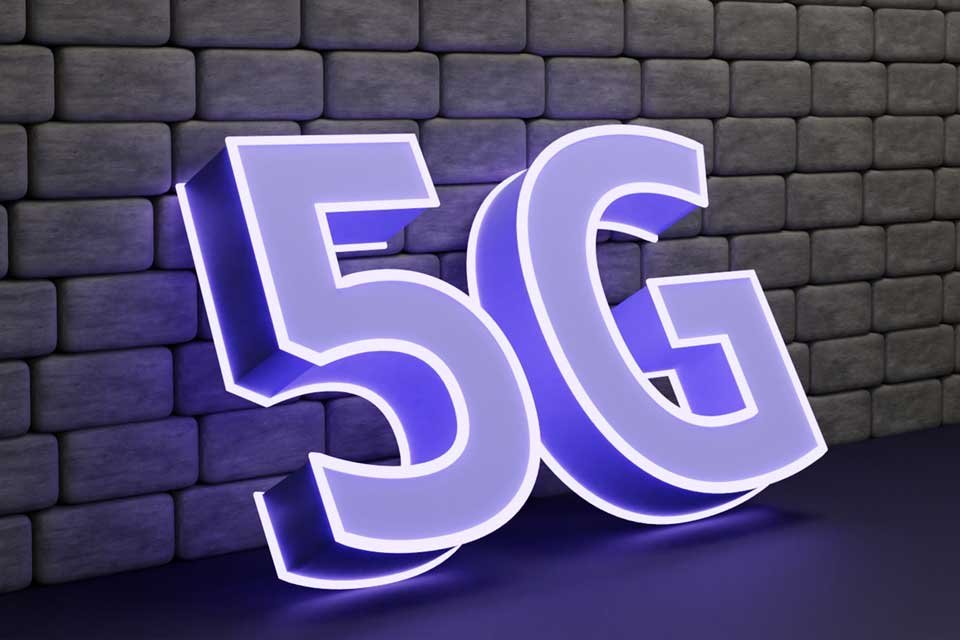HE 5G It has finally been implemented in Brazilian capitals and is now available to users with compatible mobile phones. However, the first appearance of the solution can cause confusion, because Different 5G offers in Brazil at the moment.
While 5G DSS has been offered by operators for over a year, it is now possible to use 5G SA and NSA, which can be considered the “real” version of mobile connectivity, in the country. Check out the differences between each type of 5G below.
5G DSS: better than 4G
Available in Brazil since 2020, 5G DSS works on mobile phones compatible with the technology to offer better speeds than 4G. But connectivity is far from the pure version of 5G in terms of speed and latency.
5G DSS uses antennas and bands already used in 4G to provide faster internet on mobile phones. However, the standard does not use proprietary network structures for fifth-generation mobile connectivity, which limits the solution.
In other words, 5G DSS can be considered a “middle ground” between pure 5G and 4G, providing a better experience for those who own a mobile phone compatible with next-generation technology but do not live in an accessible area. faster versions.
5G SA and NSA: Real 5G
The most powerful versions of 5G coming to Brazil are called 5G SA (standalone) and 5G NSA (non-standalone). Although they bring different experiences, both guarantee connection speeds in the gigabits per second range, which is not possible in mobile phones with 4G and 5G DSS.
5G NSA: high speed
5G NSA uses cores from 4G network connections, which provides faster expansion than the 100% pure version of the connection, but lowers performance when it comes to latency. That is, unlike 5G SA, the non-standalone version forgoes ultra-fast response time to deliver high-speed internet at gigabits per second to more users as it continues to leverage 4G infrastructure.
High speed is possible as 5G NSA uses 5G frequencies and antennas while protecting 4G cores. In practice, according to the operators, the end user’s experience in terms of download and web browsing functions should be the same as 5G SA and 5G NSA.
Both connections promise to deliver internet speeds in the gigabits-per-second range on smartphones, providing a quality experience for social networks, games and video calls, for example. The biggest difference is the latency issue, which should only have a long-term impact.
5G SA: the ultimate form
5G SA (standalone) is, in short, the full version of fifth-generation mobile connectivity. This version supports stable connection of multiple devices with low latency and high speed response time as well as guaranteeing internet speeds in the gigabits per second range.
This is possible thanks to the use of a complete connectivity infrastructure and frequencies dedicated to 5G. So, in addition to the high speed already available in 5G NSA, pure 5G also guarantees a response time of between 1 and 10 ms, which is a giant leap from the roughly 50 ms seen in other connection types.
While the change is currently unremarkable to the end consumer, the implementation of 5G SA should ensure that all revolutions of the new connectivity standard become reality in the future. The low latency of standalone 5G combined with the high speed will be essential for the evolution of the internet of things, the implementation of autonomous vehicle fleets and the implementation of new technology market trends, including remote surgeries.
However, the growth rate of 5G SA is still slow globally. According to GSMA data compiled by G1Of the 70 countries with the new connectivity standard, only 16 already have the implementation of 5G SA.
For those who live in an area that already has 5G coverage and have a compatible mobile phone, the 5G NSA will likely be the first contact with the next-gen technology, as the SA version is still limited. Additionally, access to the pure standard also requires chip replacement or a plan contract in Brazil, further limiting the use of future technology here.
Compatible mobile phone required!
Regardless of 5G connectivity, one common requirement remains to use the technology: a compatible mobile phone. Anatel has a regularly updated list of 5G mobile phones approved in Brazil.
Additionally, it’s important to note that 5G coverage is still available in a few locations in Brazil. According to app estimates, the novelty will only begin to reach Brazilian capitals widely from September.
Source: Tec Mundo












